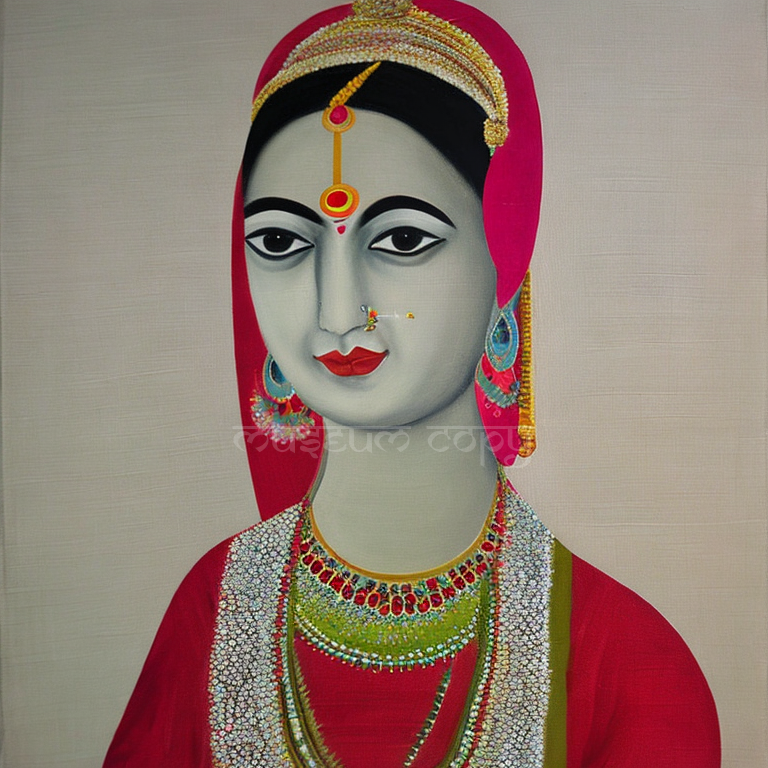Art from Mughal India
•

The art produced during the Mughal era in India stands as a testament to the grandeur, refinement, and cultural fusion that defined this remarkable period in history. The Mughal Empire, which spanned from the 16th to the 19th century, witnessed the flourishing of a unique artistic style that seamlessly blended elements from Persian, Indian, and Central Asian traditions.
Mughal art was deeply influenced by the patronage and aesthetic sensibilities of the Mughal emperors and their courts. It encompassed a wide range of mediums, including painting, architecture, calligraphy, textiles, metalwork, and jewelry, reflecting the empire's commitment to artistic excellence in every aspect of life.
Achievements
One of the most remarkable achievements of Mughal art is its painting tradition. Mughal miniature paintings are renowned for their meticulous details, vibrant colors, and delicate brushwork. These paintings often depicted scenes from the royal court, epic tales, portraits, and natural landscapes. They captured the splendor and elegance of the Mughal rulers, providing a window into their opulent lifestyles and cultural pursuits.
The Mughal emperors, such as Akbar, Jahangir, and Shah Jahan, were avid patrons of the arts and played a significant role in shaping the artistic landscape of the time. They attracted a host of talented artists, both from the Mughal court and neighboring regions, resulting in a vibrant exchange of artistic ideas and techniques.
The Mughal emperors, such as Akbar, Jahangir, and Shah Jahan, were avid patrons of the arts and played a significant role in shaping the artistic landscape of the time. They attracted a host of talented artists, both from the Mughal court and neighboring regions, resulting in a vibrant exchange of artistic ideas and techniques.
Incorporating Persian and Islamic Traditions
The art from Mughal India also incorporated elements from Persian and Islamic traditions. The exquisite calligraphy, intricate geometric patterns, and arabesque motifs found in Mughal art bear witness to this cross-cultural exchange. Persian and Islamic influences blended seamlessly with Indian aesthetics, resulting in a distinctive style that was uniquely Mughal.
Mughal architecture is another remarkable aspect of the era's artistic legacy. The iconic Taj Mahal, commissioned by Emperor Shah Jahan as a mausoleum for his beloved wife, is a testament to the architectural prowess and grandeur of the Mughals. Its symmetrical design, intricate marble inlay work, and lush gardens exemplify the fusion of Persian and Indian architectural styles.
Textiles and craftsmanship also thrived during the Mughal period. Intricate embroideries, rich brocades, and fine weaves adorned clothing, textiles, and tapestries. Mughal jewelry, with its intricate designs and use of precious gemstones, reflected the opulence and sophistication of the era.
The art from Mughal India not only showcased the power and splendor of the Mughal rulers but also celebrated the diverse cultural heritage of the Indian subcontinent. It blended influences from different regions, resulting in a unique artistic synthesis that has left an indelible mark on the art world.
Mughal architecture is another remarkable aspect of the era's artistic legacy. The iconic Taj Mahal, commissioned by Emperor Shah Jahan as a mausoleum for his beloved wife, is a testament to the architectural prowess and grandeur of the Mughals. Its symmetrical design, intricate marble inlay work, and lush gardens exemplify the fusion of Persian and Indian architectural styles.
Textiles and craftsmanship also thrived during the Mughal period. Intricate embroideries, rich brocades, and fine weaves adorned clothing, textiles, and tapestries. Mughal jewelry, with its intricate designs and use of precious gemstones, reflected the opulence and sophistication of the era.
The art from Mughal India not only showcased the power and splendor of the Mughal rulers but also celebrated the diverse cultural heritage of the Indian subcontinent. It blended influences from different regions, resulting in a unique artistic synthesis that has left an indelible mark on the art world.
Inspiration in the Modern Era
Today, the art from Mughal India continues to captivate and inspire. It serves as a testament to the artistic achievements of the Mughal Empire and provides a glimpse into the rich cultural tapestry of the Indian subcontinent during that era. The intricate paintings, architectural marvels, and exquisite crafts from Mughal India stand as enduring symbols of artistic excellence and cultural heritage.